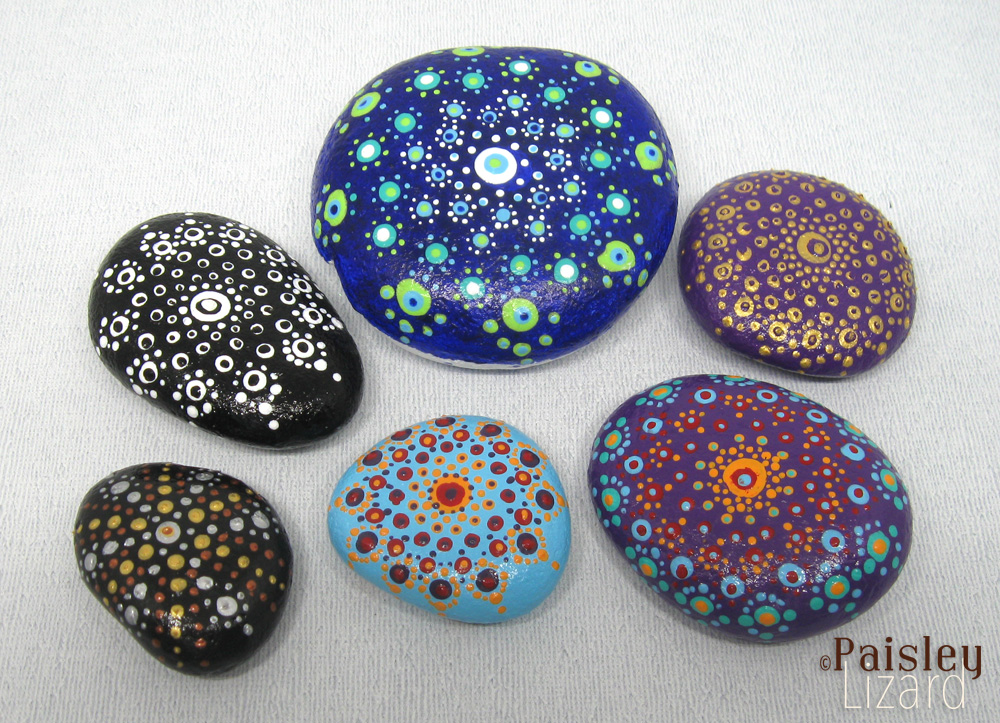
The theme for the Art Elements design challenge this month was mandalas. If you’re like me, you’ve probably admired the often intricate patterns of mandalas, which can be found in tile or stone mosaics, textile patterns, jewelry designs, paintings and more. You’re probably also aware that mandalas originated as more than art: they are a symbolic diagram used in sacred rites and as an instrument of meditation in Hindu and Buddhist Tantrism. I don’t pretend to know much more about mandalas than this, but I joined in the design challenge because mandalas fascinate me.
As it happens, I had a couple of books with mandala designs in my “aspirational arts and crafts” supplies. I think I’ve mentioned before that I sometimes buy art supplies with grand intentions and then struggle to take the leap of trying them. This challenge theme was an excellent reason to dive into two books. The first was Embroidered Mandalas by Lark Crafts. This book doesn’t go into the origins or purpose of mandalas, but rather includes 25 iron-on patterns for embroidery.
For my first project of the design challenge, I selected one of the patterns from this book and modified it slightly by only transferring a portion onto fabric. I didn’t iron the pattern onto my fabric, but rather used a heat-erasable pen to draw it on. I placed the pattern off-center in the hoop, leaving off about a third of the mandala pattern. Due to a shortage of cotton floss in my stash and not wanting to wait for more to arrive by mail order, I used some variegated thread because I happened to have a rainbow selection.
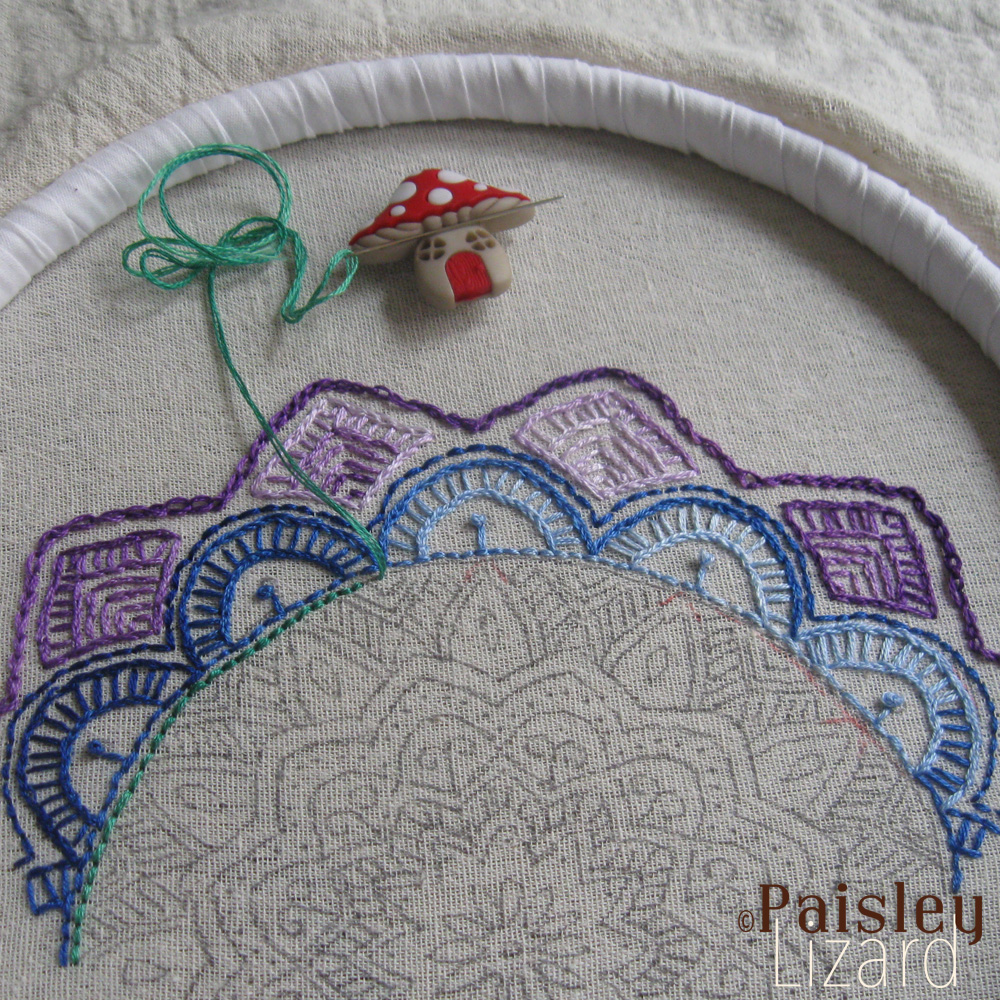
Stitching with variegated thread was an exercise in “let it go” because I couldn’t control where the dark and light variations of each color landed without wasting a lot of thread. I won’t say stitching this mandala was as soothing as the pattern book suggested it would be, but once I accepted that the colors were going to do what they were going to do, it wasn’t stressful.
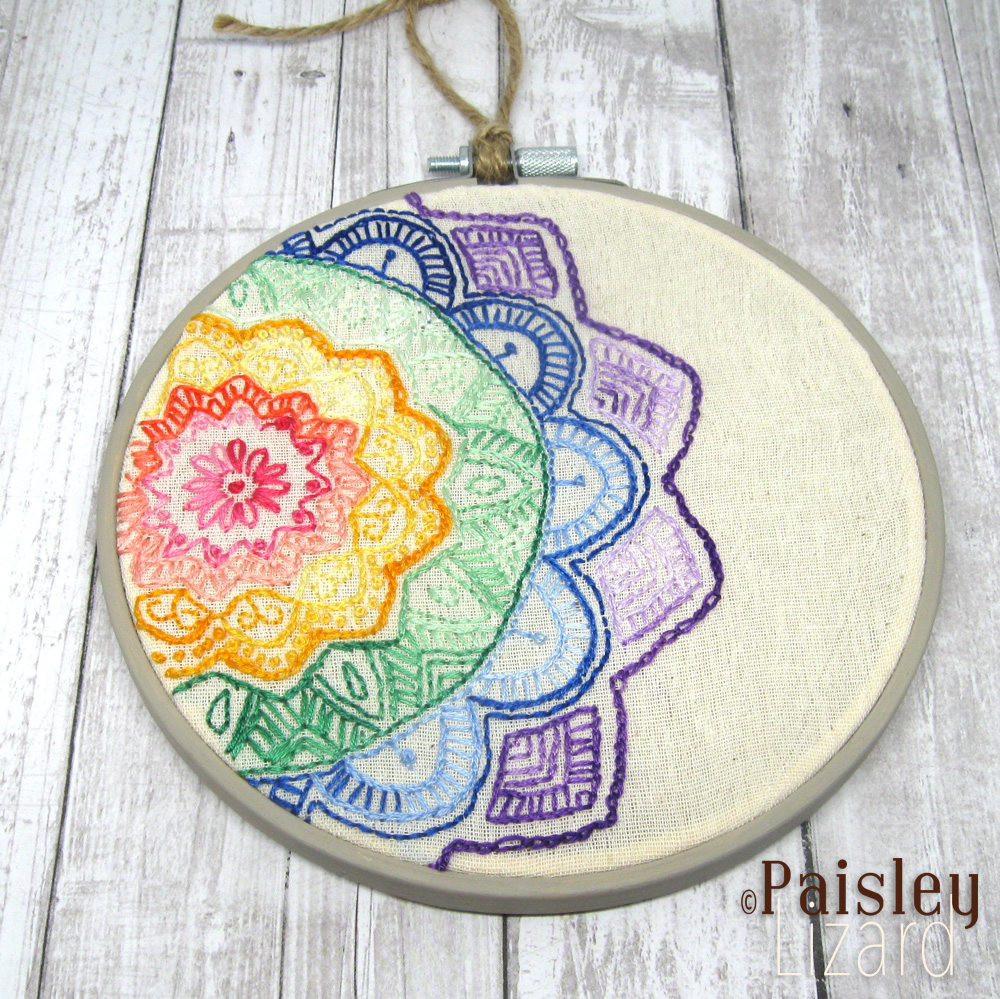
For the next project for this design theme, I drew a design based on sacred geometry. The Seed of Life, formed by intersecting circles, is one of my favorite symbols. I find it mesmerizing and used it as the center of my design. I added triangles within and around the Seed of Life as well as arrow accents. Using a ruler and compass to create the pattern took me back to high school geometry, which, I’m thinking, would have been way more engaging if my teacher had included sacred geometry.

Creating the pattern was step one of the project. Transferring it to fabric via embroidery was step two. It took me a few days to decide how to do the embroidery. I wanted to incorporate a color wheel within the Seed of Life circles. I also wanted to stitch it on black fabric, making the lines of the triangles, circles, and arrows all white. Due to the aforementioned thread shortage, I wasn’t able to create that version. So you’ll have to visualize how awesome that would have looked. What I did instead was paint the color wheel onto the fabric using Inktense blocks. And then I used metallic threads to stitch the geometric lines.
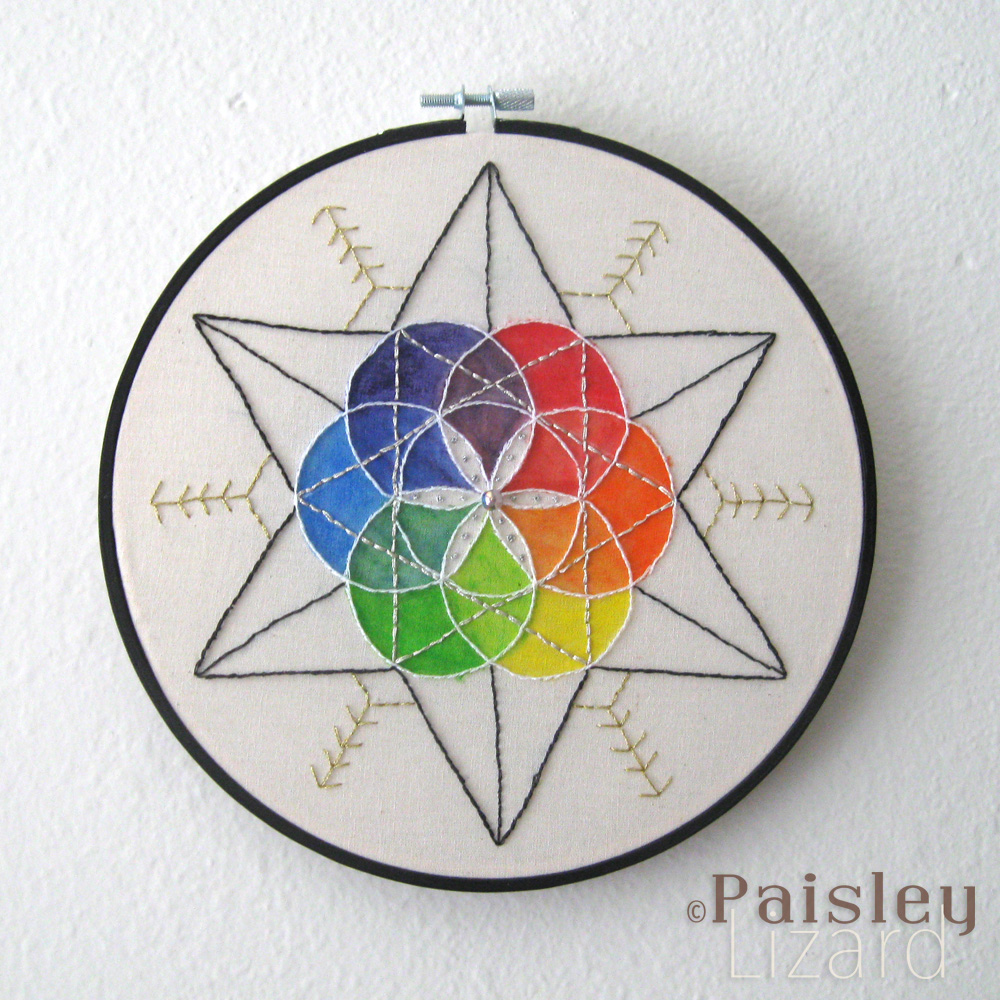
If you’ve never stitched with metallic threads, you should be forewarned that it frays. A lot. It frays when you try to put it through the eye of a needle. It frays with every pull through the fabric. I’m pretty sure it frays when you look at it wrong. I knew this was going to happen, even with thread conditioner, and each time I managed to get a new length of thread through the eye of a needle was cause for celebration.

The final projects for this design challenge were based on a second book from my aspirational supplies stash: Mandala Stones by Natasha Alexander. This book has an introductory page about the origins and symbolism of mandalas, information about supplies, and then step-by-step patterns. Most of the patterns are created with dots of acrylic paint. Since I have an assortment of acrylic paint and ball-end tools in my polymer clay supplies, I had everything needed to get started but the rocks. I borrowed some rocks from the landscaping around my apartment complex. They were released back into the wild after being painted. I hope the other rocks don’t make fun of them for being different.
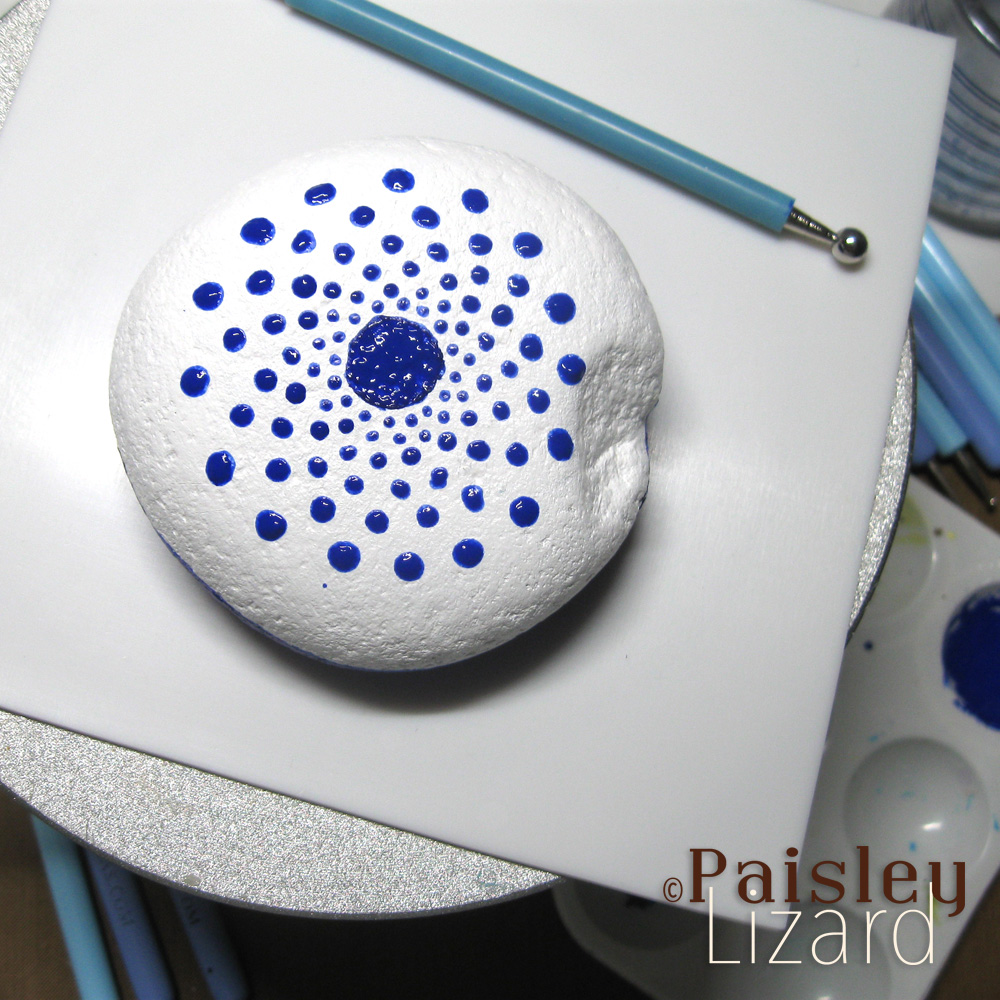
Something not mentioned in the book which I discovered via trial and error is that paint consistency matters a great deal. Some of my paints are heavy body acrylics, which formed stiff peaks in the centers of each dot, like a perfectly whipped meringue. This is problematic if you want to layer another color dot over it. After thinning my paints with a little water, I got better dots but there was still some trial and error in getting the paint consistency just right.
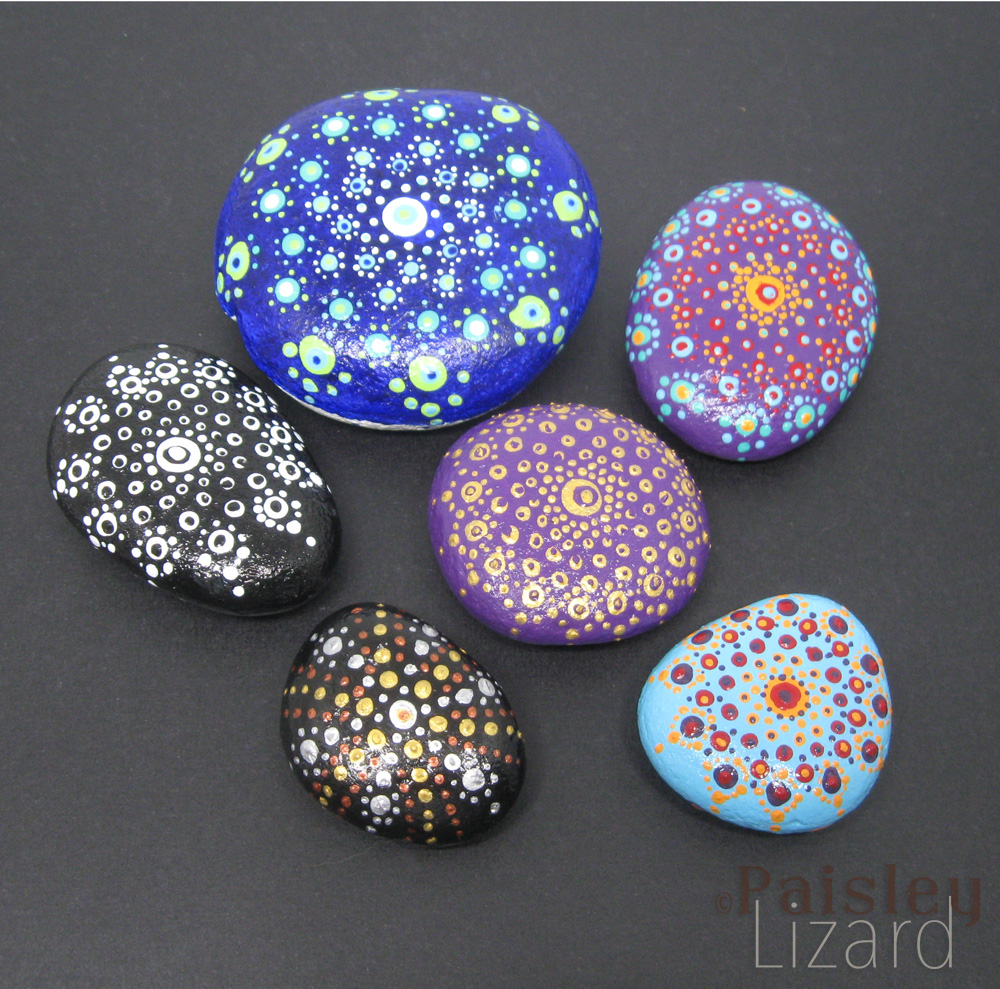
Painting rocks sounds like exactly the sort of thing you would do mid-summer during a pandemic, doesn’t it? I found it soothing. I knew I wouldn’t be good at it right away and decided to be okay with that. Making perfectly precise dots takes a steady hand, patience, the proper paint consistency, and practice loading the right amount of paint on the applicator.
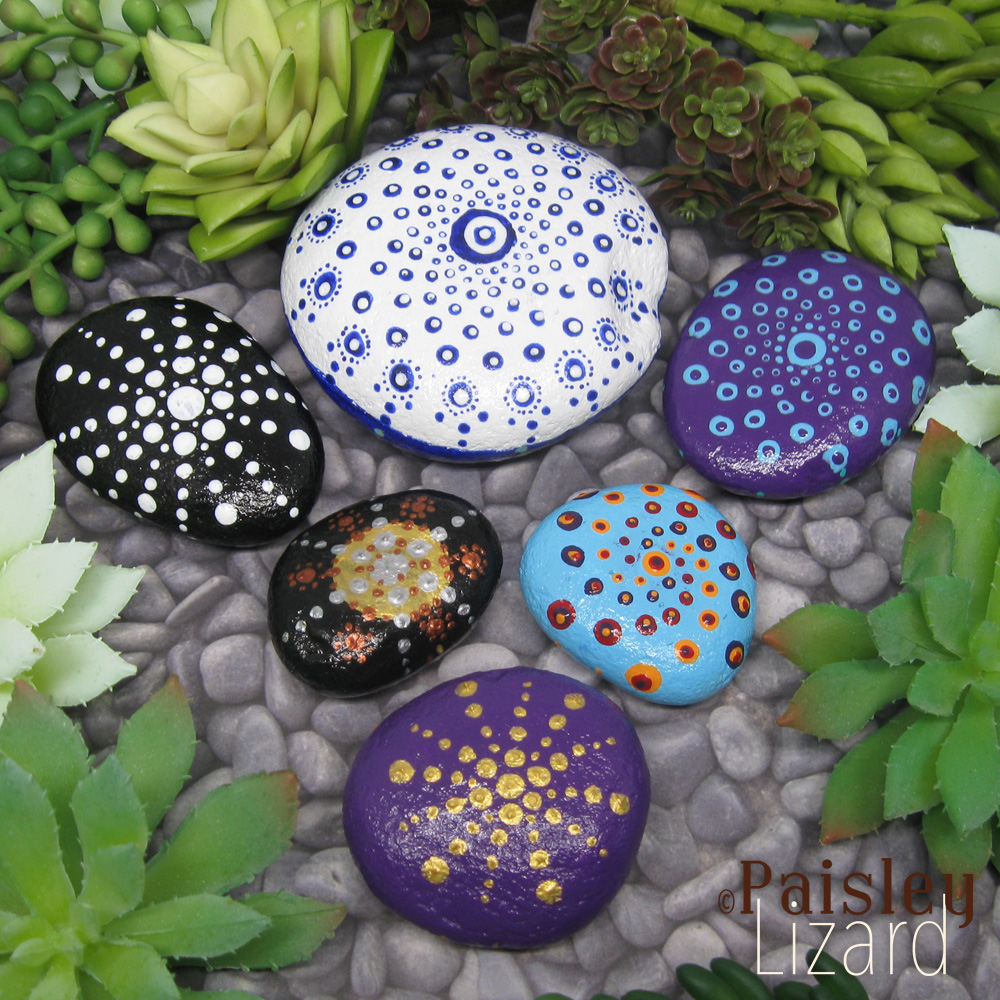
That’s the end of my mandala-inspired designs for this month’s challenge. Many thanks to the Art Elements team for another great inspiration theme. And thanks to you for stopping by my blog today. If the spirit moves you, please leave a comment.


Just lovely…superb design work! Wish I could do as well with drafting tools…thanks again for posting an email…I don’t do FB
Thanks so much, Debora. I’m not sure you would have seen this on FB anyway given the way the newsfeed seems to favor paid ads.
Hoop Butts! LOL :)))))
All are impressive, and I particularly favor the painted rocks! Years (and years) ago when my kids were very young, we painted some rocks unearthed when planting perennials.
They lasted for 18+ years through freezing, rainy or hot & sunny weather but when I came back in January and started seriously cleaning my garden in April, I found that they had faded in these past 3 years :((((.
I hope yours will be appreciated by your neighbors … and perhaps they’ll be inspired to do the same!!
Thanks so much, Alysen. If you say “hoop butt” and then giggle like a Minion, it’s even funnier. 😀
I do wonder how long the paint will last out in the wild. I gave the painted rocks a couple coats of a UV-protectant varnish before putting them outside so maybe that will extend things. Eighteen years sounds like a good long time for your garden rocks.
I remember embroidering with variegated thread in college and wasting so much of it. Yes, not getting the colour right can indeed drive you mad. Your colour wheel piece is fabulous. I love the thread texture contrast and elevates the solid colours. Almost use fabric glue (clear glue) while working with metallic thread. Flatten it to fit the eye of your needle then apply the glue and let it dry for 5 minutes. Try it and you will never curse another metallic thread – atleast while threading a needle with it.
Thanks so much, Divya. I can’t even remember why I bought the variegated thread because I should have known it would go against my control-freak tendencies. I thought about trying fabric glue to stop the ends fraying while I stitched, but not for threading, which seems brilliant. Unfortunately, when I found the bottle that’s been in my sewing kit for who knows how long, it was dried up. I will definitely get a fresh bottle before I use the metallic thread again.
I think all of your mandalas turned out exceptionally well. I like the spectrums (rainbow!!) you did on both of your embroidery projects. However, the rocks are so cute. And, it sounds like they were a lot less frustrating to make that the stitched ones. Beautifully done.
Thanks so much, Hope. There was some trial and error with the rocks, but overall they were fun to make. And on a recent walk I noticed that half of them are no longer where I released them. Maybe they found new homes.